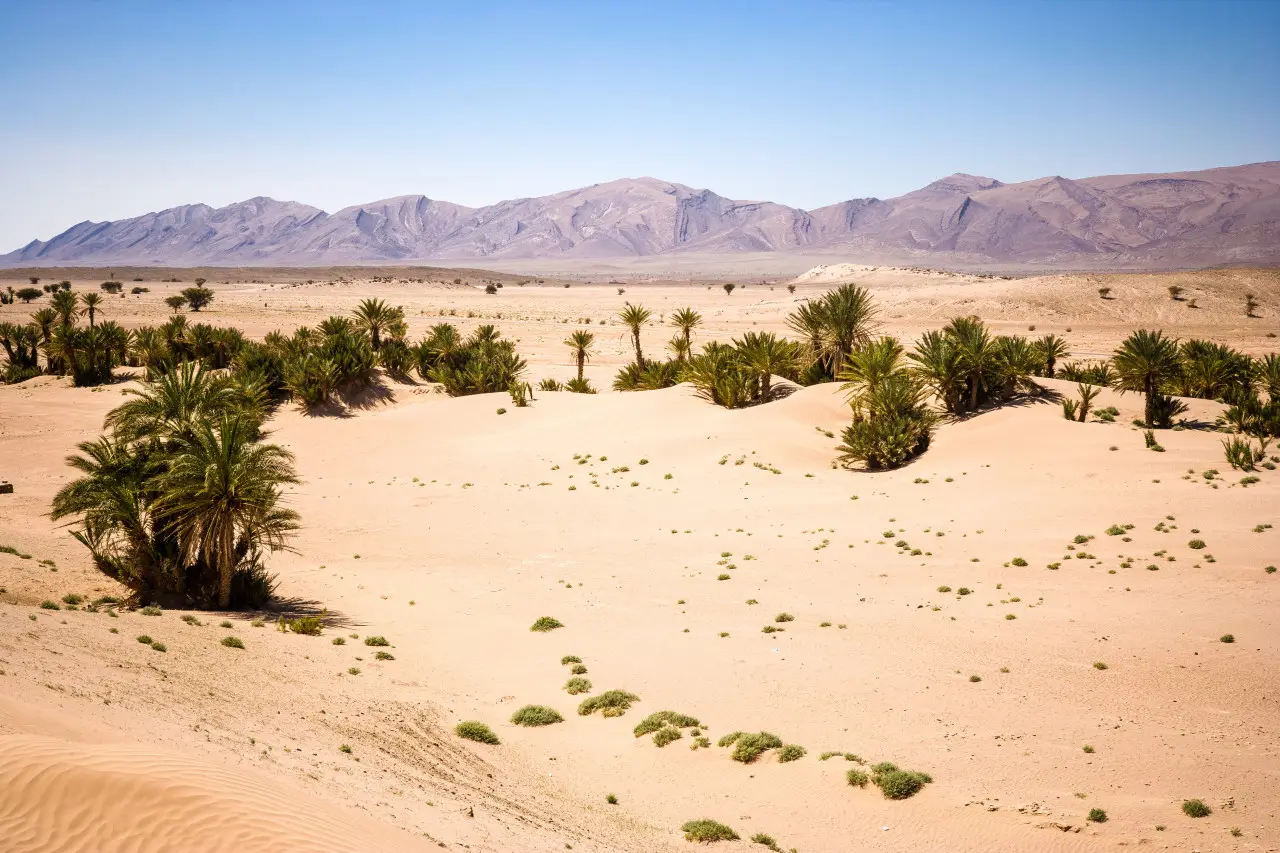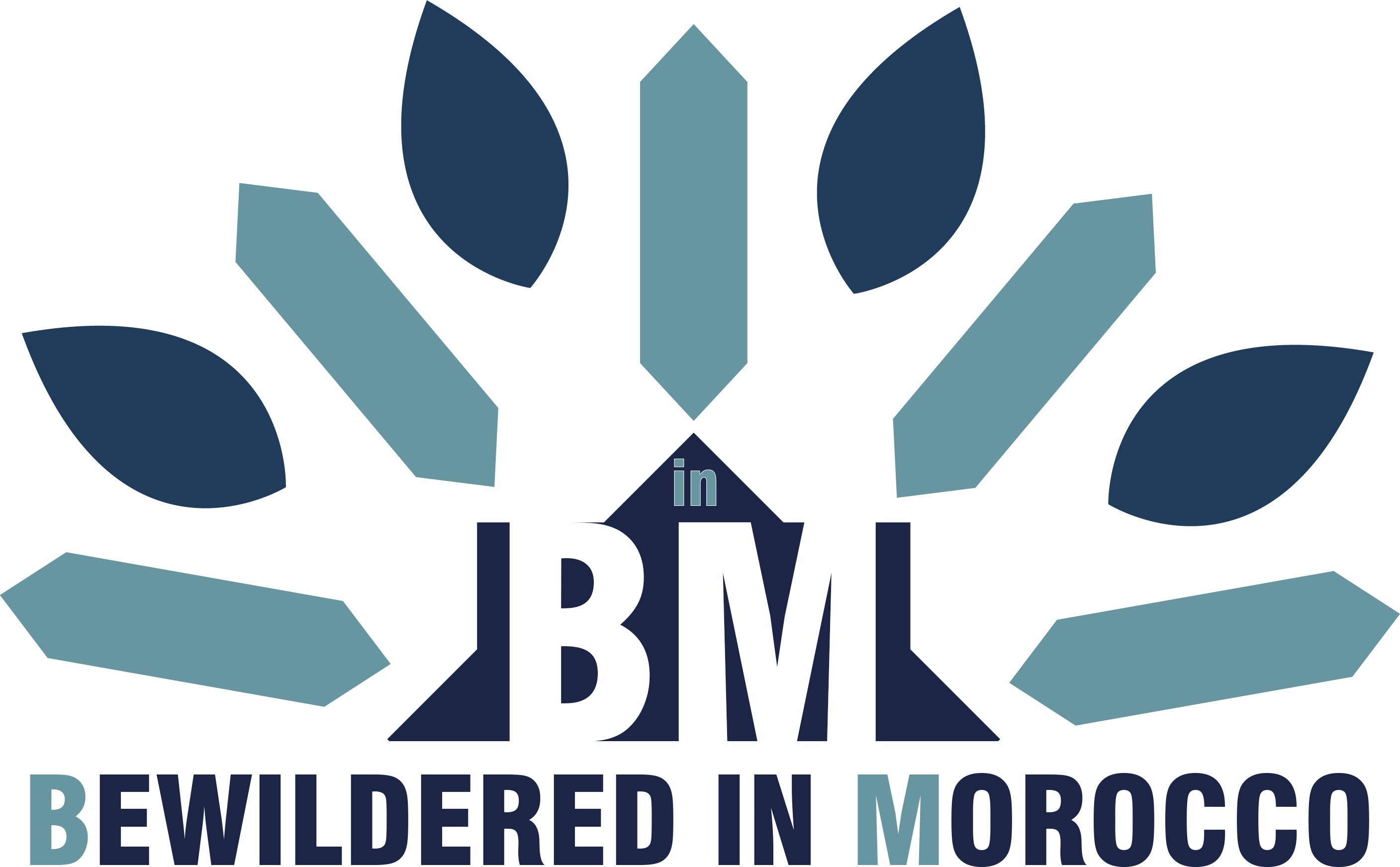When a friend asked me if Taghjijt worth visiting, I paused. Not because I didn't have an answer, but because I realized this small Anti-Atlas town doesn't fit the typical Moroccan travel checklist. There are no famous blue streets like Chefchaouen, no bustling medinas like Marrakech. Yet, after spending time in the Guelmim-Oued Noun region, I discovered something special about this place—something that speaks to travelers who want Morocco without the crowds.
Taghjijt sits quietly in the foothills of the Anti-Atlas mountains, surrounded by palm groves and desert landscapes. It's the kind of place where you wake up to silence instead of call-to-prayer echoes bouncing off ancient walls. If you're wondering whether this serene oasis deserves a spot on your Morocco itinerary, let me share what I've learned from exploring this lesser-known corner of my adopted country.
What Makes Taghjijt Different from Other Moroccan Towns

Taghjijt isn't trying to compete with Morocco's tourist giants, and that's exactly its charm. While other towns have adapted to accommodate thousands of visitors, Taghjijt remains a local hub for nearby rural communities. Walking through the streets feels less like sightseeing and more like stepping into daily Moroccan life.
The architecture here tells quiet stories. Traditional Moroccan buildings line the streets—no Instagram-famous doors or elaborate riads, just honest structures built for the semi-Saharan climate. Thick walls keep homes cool during warm summers, while small windows offer protection from the heat. Coming from my background in construction, I appreciate how these design choices reflect centuries of practical wisdom.
The town serves as a gateway to the surrounding countryside. The Anti-Atlas mountains create a dramatic backdrop, their rugged peaks contrasting with the green of palm groves below. This landscape feels different from the High Atlas—more sparse, more stark, somehow more honest.
The Real Attractions: What You'll Actually Do Here
Let's be clear: Taghjijt doesn't have a long list of "must-see" monuments. What it offers instead are experiences that connect you with the land and its people.
Exploring the Casbah Caravanserail
The Casbah Caravanserail stands as Taghjijt's most significant historical site. Walking through this old trading post, I could almost hear the camel caravans that once passed through. The architecture shows you how merchants and travelers rested during long desert journeys. It's not as grand as Ait Benhaddou, but there's something intimate about exploring a site without battling tour groups for photos.
Getting Lost in Souk Tablaba
The local medina, known as Souk Tablaba, offers an authentic market experience. This isn't a tourist souk—locals actually shop here. You'll find regional goods, watch artisans work, and experience genuine interactions. I've bought spices here where the vendor spent twenty minutes teaching me how to use them properly, never once rushing to make another sale.
Hiking the Valleys and Oases
The real magic of Taghjijt lies in its surroundings. The valleys and oases around town provide beautiful hiking opportunities. Touaghil Public Garden offers a peaceful retreat where you can rest under palm trees and enjoy the quiet. The hiking here isn't technical—just pleasant walks through stunning landscapes where you might not see another soul for hours.
About thirty minutes away, you'll find Amtoudi, accessible through scenic hikes that reward you with panoramic views of the Anti-Atlas. The landscapes shift between rocky outcrops and surprising patches of green where water creates small paradises in the desert.
Where to Stay: Accommodation Options in Taghjijt

Despite its small size, Taghjijt offers decent lodging options. I've stayed at places ranging from simple local guesthouses to more comfortable hotels.
Tigmi Bulbul Hotel gets mentioned frequently by visitors, and for good reason. The rooms are spacious with original decor that feels authentically Moroccan without being over-the-top. Their shaded terraces overlook the valley, perfect for morning coffee or evening tea. The staff genuinely cares about making your stay comfortable—they'll help arrange local guides or suggest hiking routes.
For those seeking deeper cultural immersion, family-run guesthouses offer traditional hospitality. These riads and dars might not have the amenities of hotels, but you'll experience Moroccan home life firsthand. Budget travelers will find simple, clean local establishments that cover the basics without breaking the bank.
When to Visit: Climate and Timing
Taghjijt experiences a semi-Saharan climate—warm, dry, with rainfall so rare it's worth celebrating when it comes. Summer temperatures climb, though the desert heat feels different from coastal humidity. Mornings and evenings cool down nicely, perfect for outdoor activities.
June offers particularly pleasant conditions. The temperatures are warm but manageable, and the landscapes maintain their color before the peak summer heat. Spring and autumn also work well, avoiding both extreme heat and the cooler winter nights.
Taghjijt vs. Popular Moroccan Destinations: An Honest Comparison
Let me be straight with you: Taghjijt and Marrakech serve completely different purposes. Marrakech offers incredible historical sites, sophisticated dining, vibrant nightlife, and infrastructure built for tourism. Taghjijt offers none of that.
What Taghjijt does offer is authenticity without performance. In Marrakech, you're always somewhat aware that the city is "on"—performing its role as a tourist destination. In Taghjijt, life continues regardless of visitors. The markets serve locals. The cafes fill with residents discussing local news. The rhythms of the town follow prayer times and seasons, not tour bus schedules.
Compared to coastal cities like Essaouira or Agadir, Taghjijt trades beaches and seafood for mountains and desert silence. You won't find the same variety of restaurants or the same ease of English communication. But you'll find something increasingly rare—a place where tourism hasn't yet reshaped the local culture.
Who Should (and Shouldn't) Visit Taghjijt
Taghjijt worth visiting depends entirely on what kind of traveler you are.
You'll love Taghjijt if you:
- Want to escape tourist crowds and experience genuine local life
- Enjoy hiking and spending time in nature
- Appreciate quiet, contemplative travel
- Value cultural immersion over checking off landmarks
- Feel comfortable with basic amenities and simple accommodations
- Seek authentic experiences rather than curated ones
You might not enjoy Taghjijt if you:
- Need extensive shopping and dining options
- Want vibrant nightlife or evening entertainment
- Prefer luxury accommodations with all amenities
- Feel anxious without well-developed tourist infrastructure
- Have limited time and want to see famous Moroccan sites
- Need constant activity and organized tours
I think of Taghjijt as a "reward destination"—a place you visit after you've seen the famous spots and want to understand Morocco more deeply.
Practical Tips for Visiting Taghjijt
Getting to Taghjijt requires some planning. The town isn't on major tourist routes, so you'll likely need to arrange private transportation or take a shared taxi from larger nearby towns. Shared taxis leave when full—a lesson in Moroccan patience!
Bring cash. ATMs exist but aren't abundant, and many establishments don't accept cards. Pack layers—desert temperatures swing dramatically between day and night. Modest dress remains important, perhaps even more so in smaller towns where Western tourists are less common.
Learn a few Arabic or Tamazight phrases. While some locals speak French, English is less common here than in tourist cities. A simple "salam" (hello) and "shukran" (thank you) open doors and hearts.
Most importantly, adjust your expectations. Things move slowly here. Restaurants might take longer to serve food. Shops might close during prayer times. This isn't inefficiency—it's life following a different rhythm.
My Final Verdict: Is Taghjijt Worth Visiting?
After exploring this quiet corner of Morocco, my answer is a solid yes—with conditions. Taghjijt worth visiting if you're ready for what it actually offers rather than what you might expect from "a Moroccan destination."
This town gives you space to breathe, to think, to simply be. The landscapes humble you with their beauty. The people share their lives without expectation. The pace slows you down whether you want it to or not.
I've sent friends here who returned grateful for the recommendation. I've also heard from travelers who found it too quiet, too basic, too far from what they imagined Morocco would be. Both responses are valid.
If you're planning a Morocco trip, consider Taghjijt as a complement to busier destinations. Spend a few days in Marrakech or Fes, then escape to Taghjijt to decompress. Use it as a base for exploring the Anti-Atlas region. Let it show you a side of Morocco that tour buses don't reach.
The question isn't really whether Taghjijt is worth visiting in absolute terms—it's whether this serene oasis town matches your travel style and what you're seeking from Morocco. For the right traveler at the right time, Taghjijt offers something increasingly precious: authenticity, peace, and space to connect with a place on its own terms.
Have you visited off-the-beaten-path destinations in Morocco? What hidden places would you recommend, and what draws you to quieter destinations over famous tourist spots? Share your experiences in the comments—I love hearing about the Morocco beyond the guidebooks.
